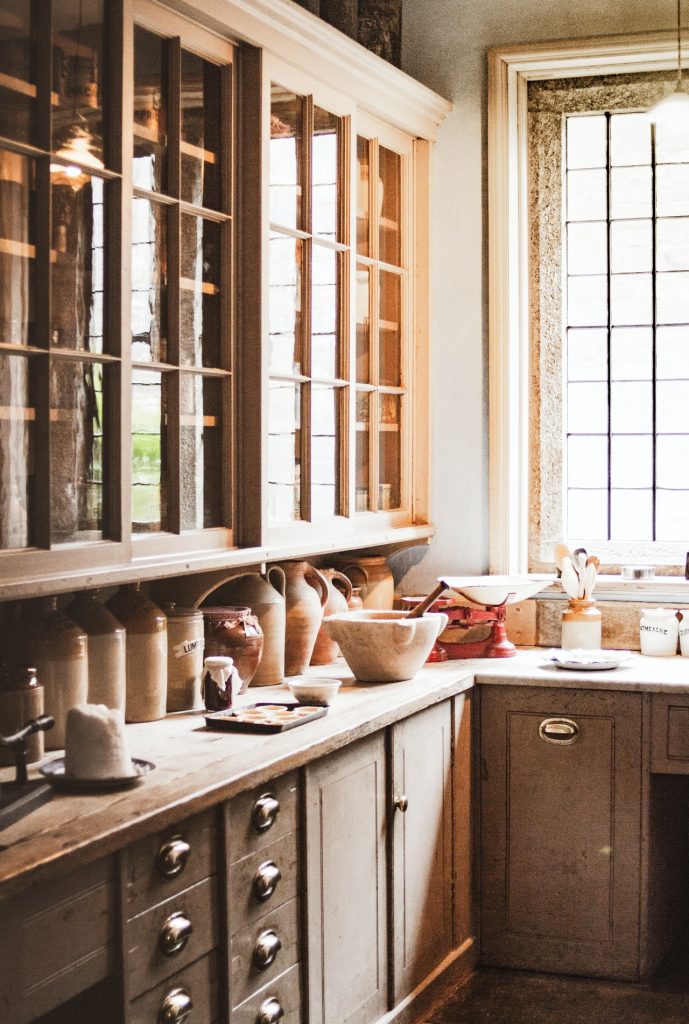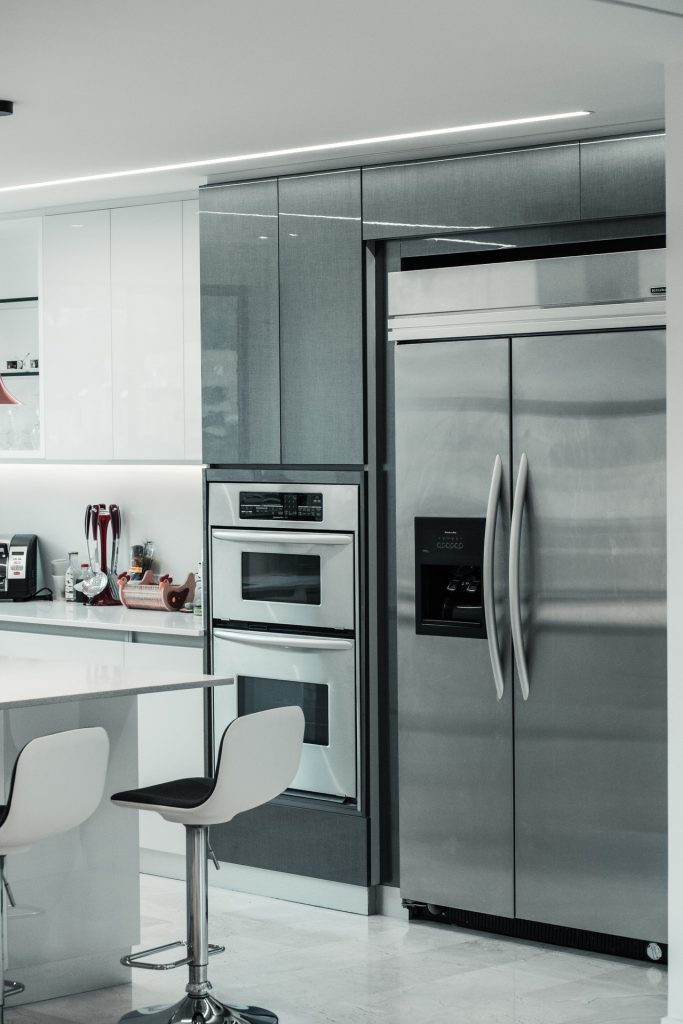
Homes need to be designed to be environmentally friendly as well as healthy for the occupants.
A few of the environmental considerations in the home include water quality, air quality, and noise reduction. Let’s take a look at how to improve these areas in your home, focusing on the kitchen and bathroom.
Water quality standards assure that water is safe to drink or ingest and that it is functional and aesthetic for washing and bathing.
This means the water is free from disease-causing organisms, toxic chemicals, radioactive contaminants, water hardness, and iron bacteria.
Iron bacteria is usually first noticed in the toilet and is a reddish-brown slime that can clog pipes and fixtures.
If you have any of these problems, you can solve them with filters, water softeners, iron removal equipment, neutralizers, distillation, reverse osmosis, and disinfection methods.
Water conservation means that water is not wasted
 The greatest use of water in most homes is the flushing of toilets, as a single flush can use up to 6 gallons of water in the older models.
The greatest use of water in most homes is the flushing of toilets, as a single flush can use up to 6 gallons of water in the older models.
This can be solved by installing a toilet with a more efficient flushing system. Other sources of wasted water are showers, tubs, and leaky faucets.
Bathrooms are a major source of moisture, which is great news for bacteria, but not so much for the homeowner because that is how mold issues are formed.
A bathroom needs a good ventilation system to reduce moisture. Ventilation includes windows, doors, and fans.
 Range hoods or downdraft ranges are necessary for a kitchen to provide adequate air exchange and to supply the space with fresh air.
Range hoods or downdraft ranges are necessary for a kitchen to provide adequate air exchange and to supply the space with fresh air.
Another way to improve air quality in your home is to choose building materials with low volatile organic compounds (VOCs). VOCs can be found in paint, manufactured woods, varnishes, and plastics. Gasses are released from these materials and are unhealthy for the occupants if the space is not properly ventilated.
 Appliances cause noise by vibrating against the floor and walls, as well as by sending vibrations through the air. Appliances that cause noise pollution may include refrigerators, dishwashers, washing machines, ventilation fans, and jetted bathtubs.
Appliances cause noise by vibrating against the floor and walls, as well as by sending vibrations through the air. Appliances that cause noise pollution may include refrigerators, dishwashers, washing machines, ventilation fans, and jetted bathtubs.
To reduce the noise generated, it is best to design “noisy” rooms back to back, use building materials that buffer sound, and choose appliances that produce the least amount of noise.
For energy efficiency, look for the Energy Star logo on qualified appliances that have been Energy Star rated.
Water, moisture, and noise are only three of the areas that need to be considered when designing a safe and environmentally-friendly home.
Other “green design” ideas to consider include energy-efficient lighting, sustainable building materials, recycling, and an efficient waste management system.
Building an environmentally friendly and healthy home will have a positive impact on the earth, as well as on your life.
Common FAQs
What are examples of environmental considerations?
Environmental considerations are the factors that are external to the organization or individual. They can be either positive or negative.
Some examples of environmental considerations include:
- The physical environment in which the organization operates,
- The natural environment in which the organization operates,
- Societal expectations and norms,
- Technological advances that affect society.
How can a kitchen be environmentally friendly?
Kitchens are often the most energy intensive room in the house. But there are many ways to make them more environmentally friendly.
Some of the things you can do to make your kitchen more environmentally friendly are:
- Switching to eco-friendly cleaning products,
- Installing energy efficient appliances,
- Using eco-friendly cookware and utensils,
- Cooking with sustainable ingredients, and
- Avoiding food waste
How can we save the environment in the bathroom?
Soap is the most common item found in the bathroom. It is also one of the most damaging. The chemicals that are used to make soap are harmful to the environment. When you wash your hands, you are rinsing off these chemicals and pouring them into the water. This is not good for our oceans, rivers, or lakes.
There are many ways you can save the environment in your bathroom. One way is to use bar soap instead of liquid soap because bar soap does not contain any harmful chemicals or artificial additives. You can also take shorter showers and turn off the water when you brush your teeth or shave so that less water is wasted every day.
What is a sustainable bathroom?
A sustainable bathroom is a bathroom that is conscious of the environment and has been designed to use less water, less energy, and less resources. It is designed to be as environmentally friendly as possible.
The goal of a sustainable bathroom is to reduce the amount of resources used, but also to make the space as comfortable as possible.

